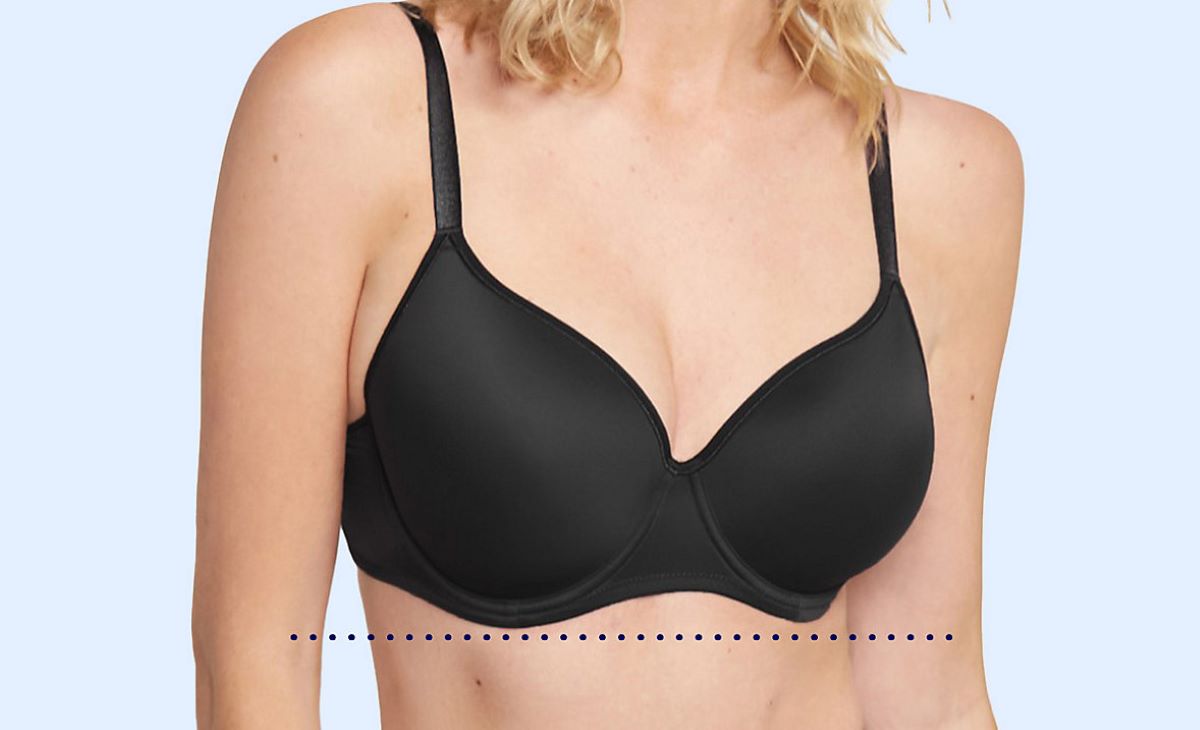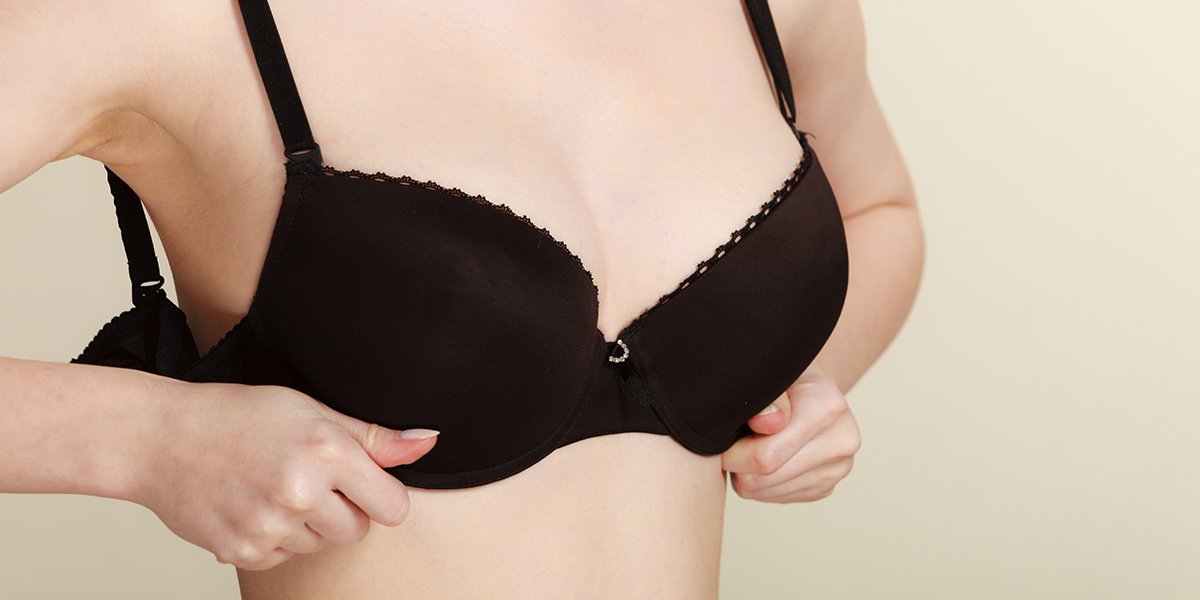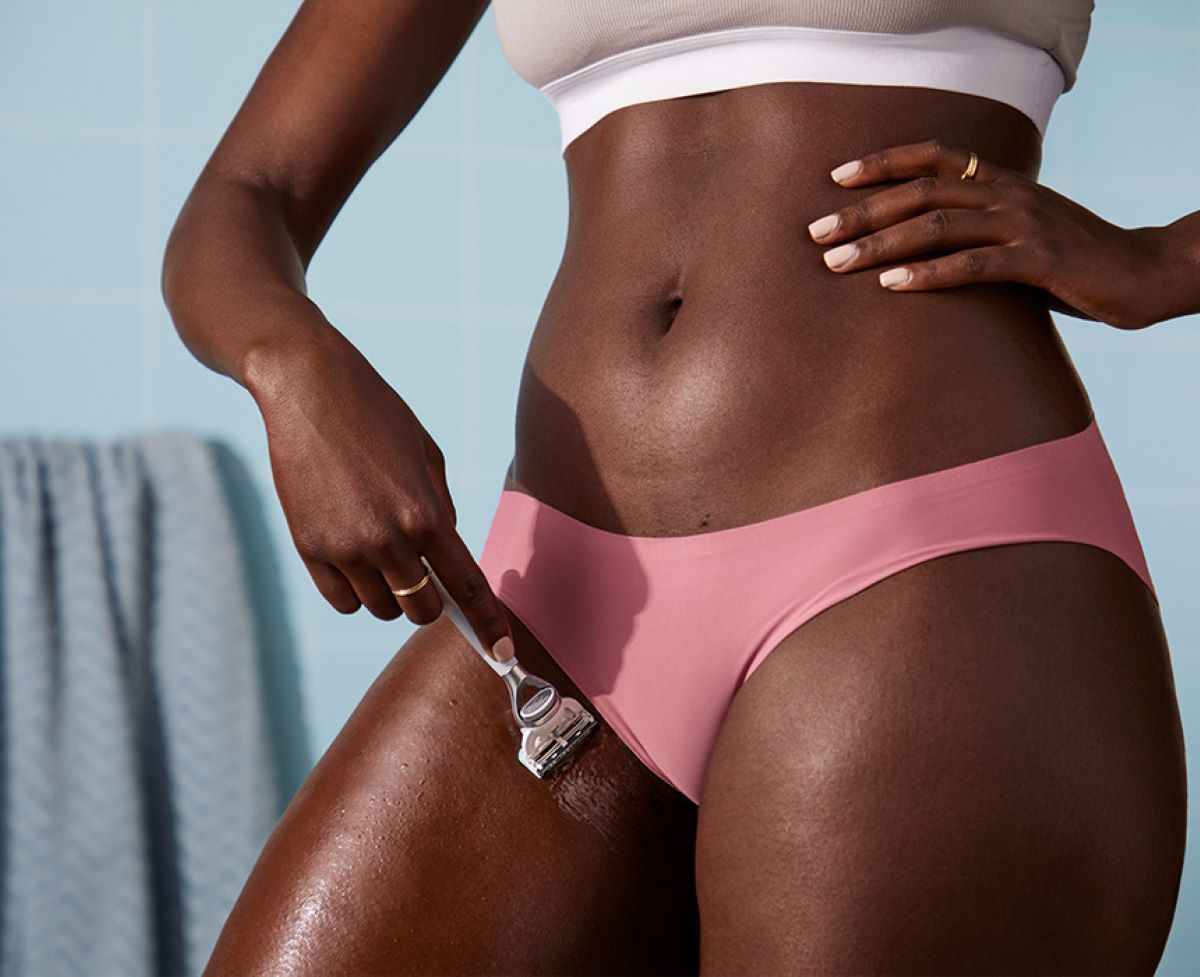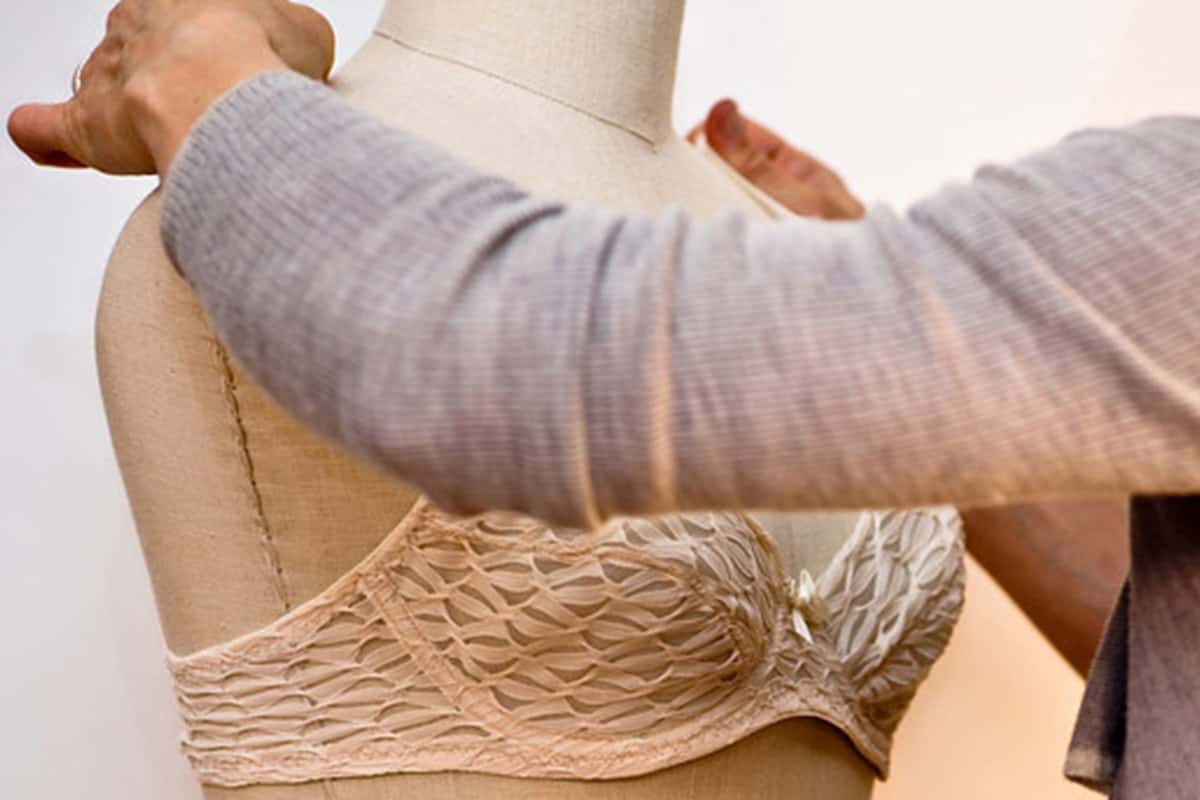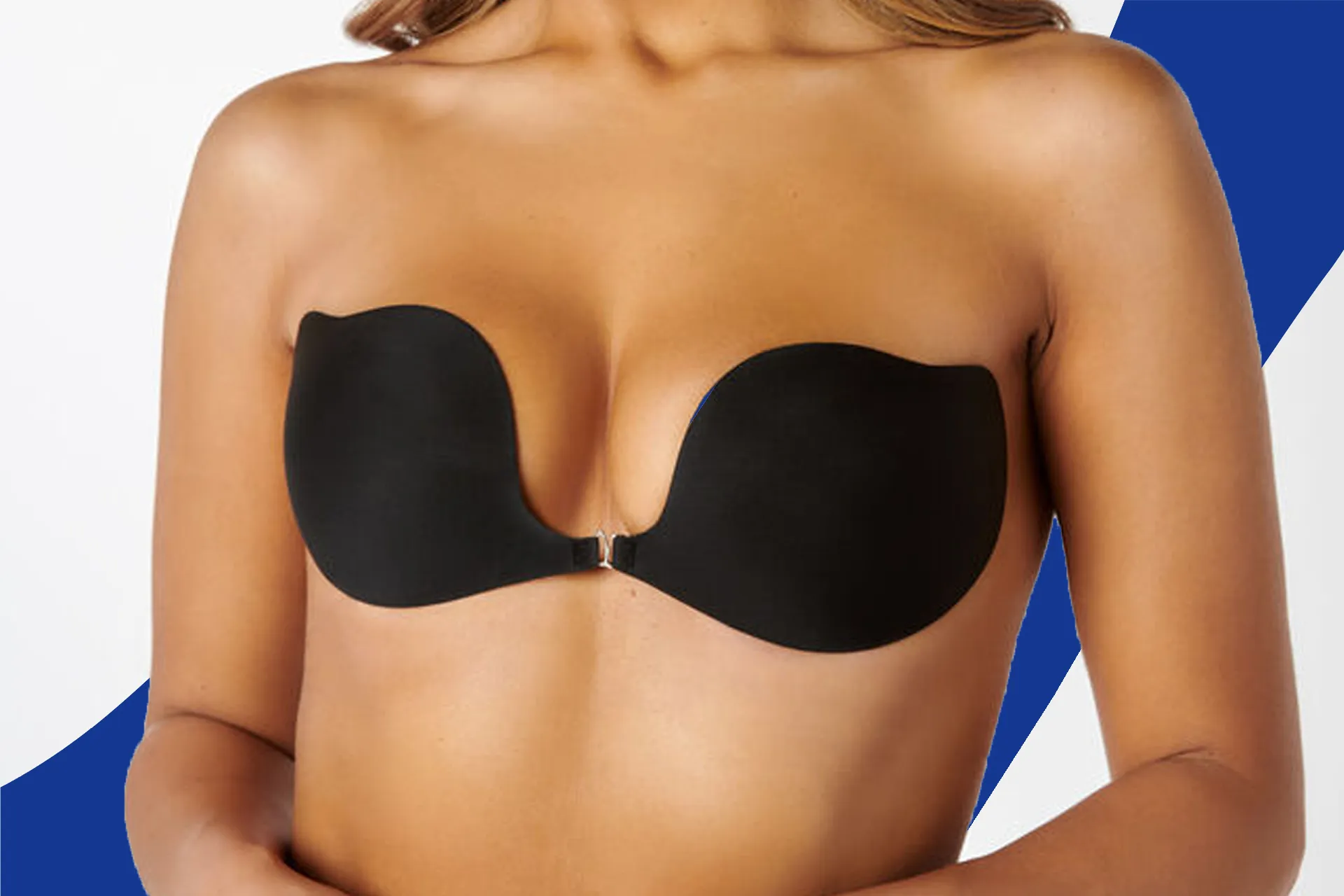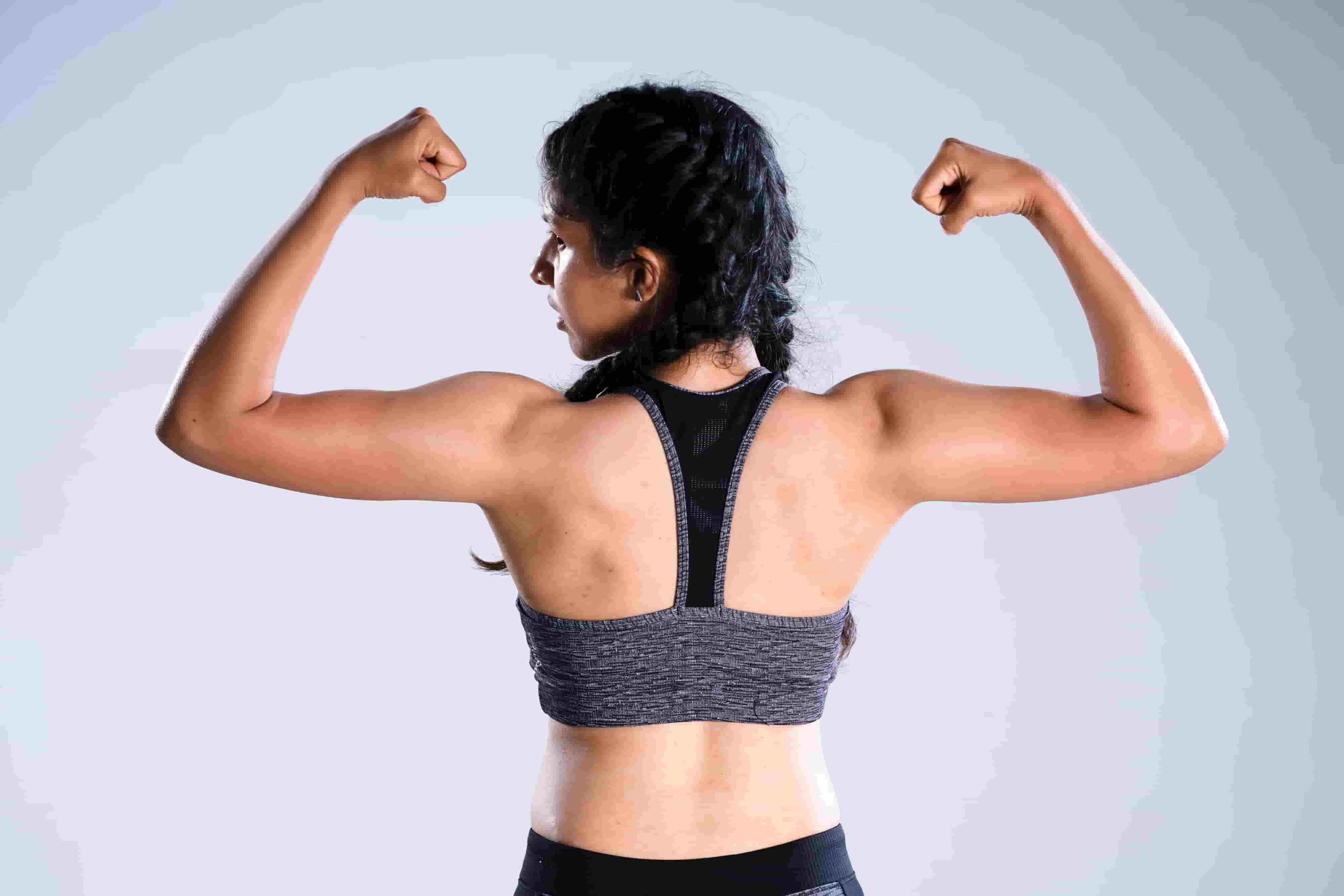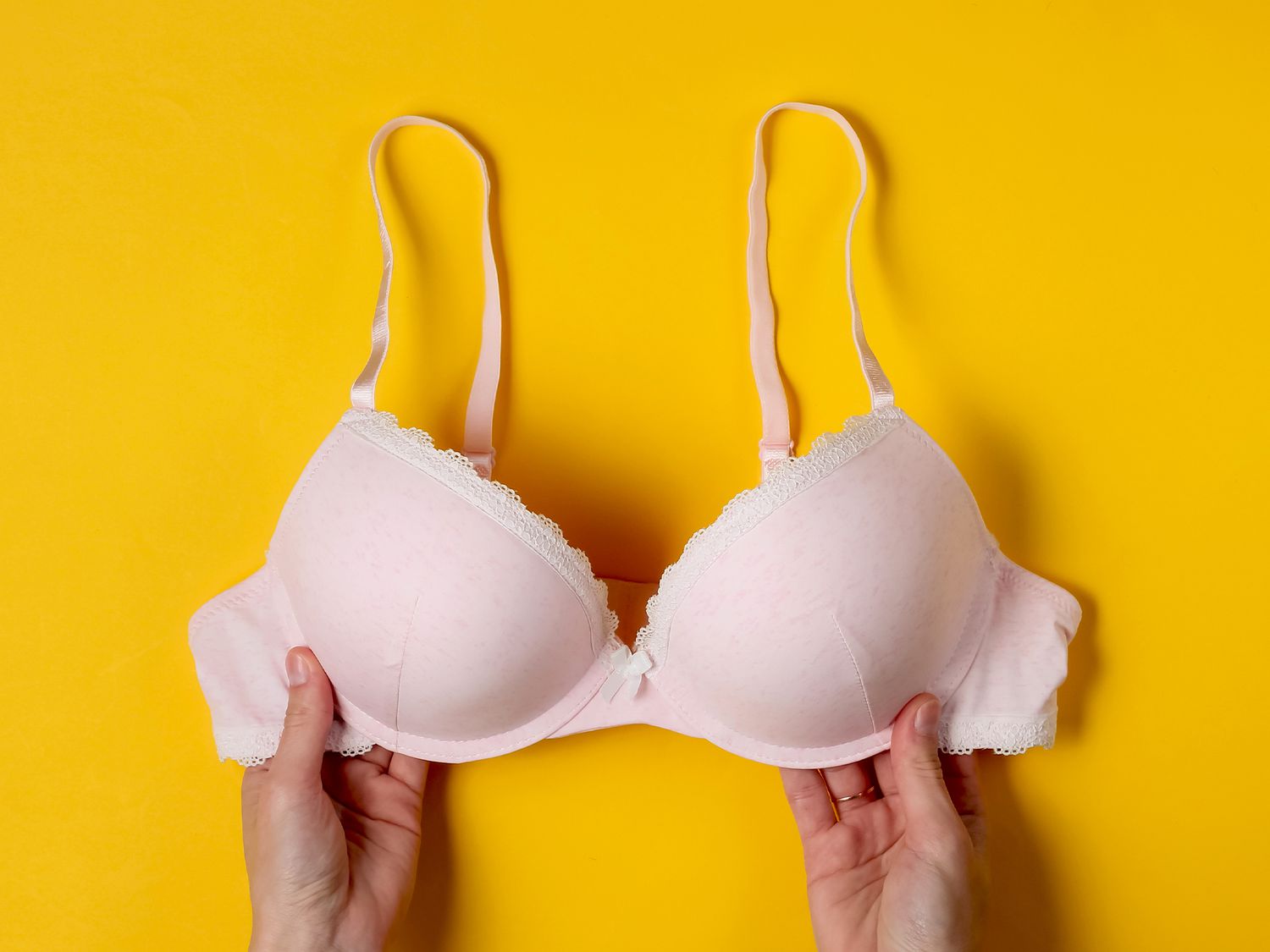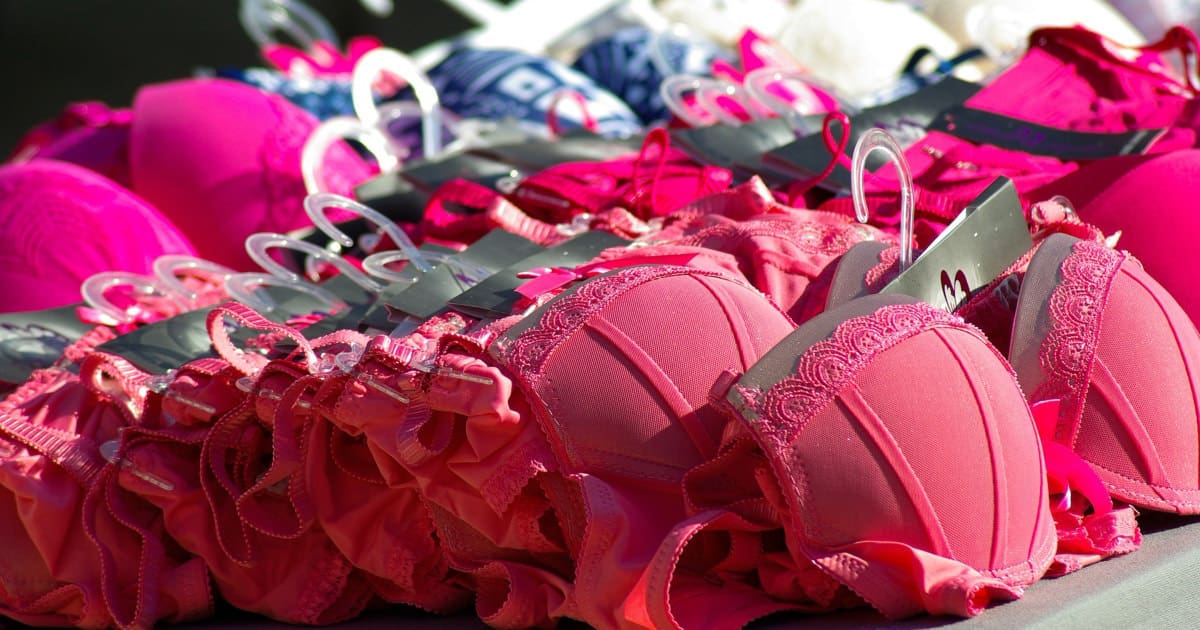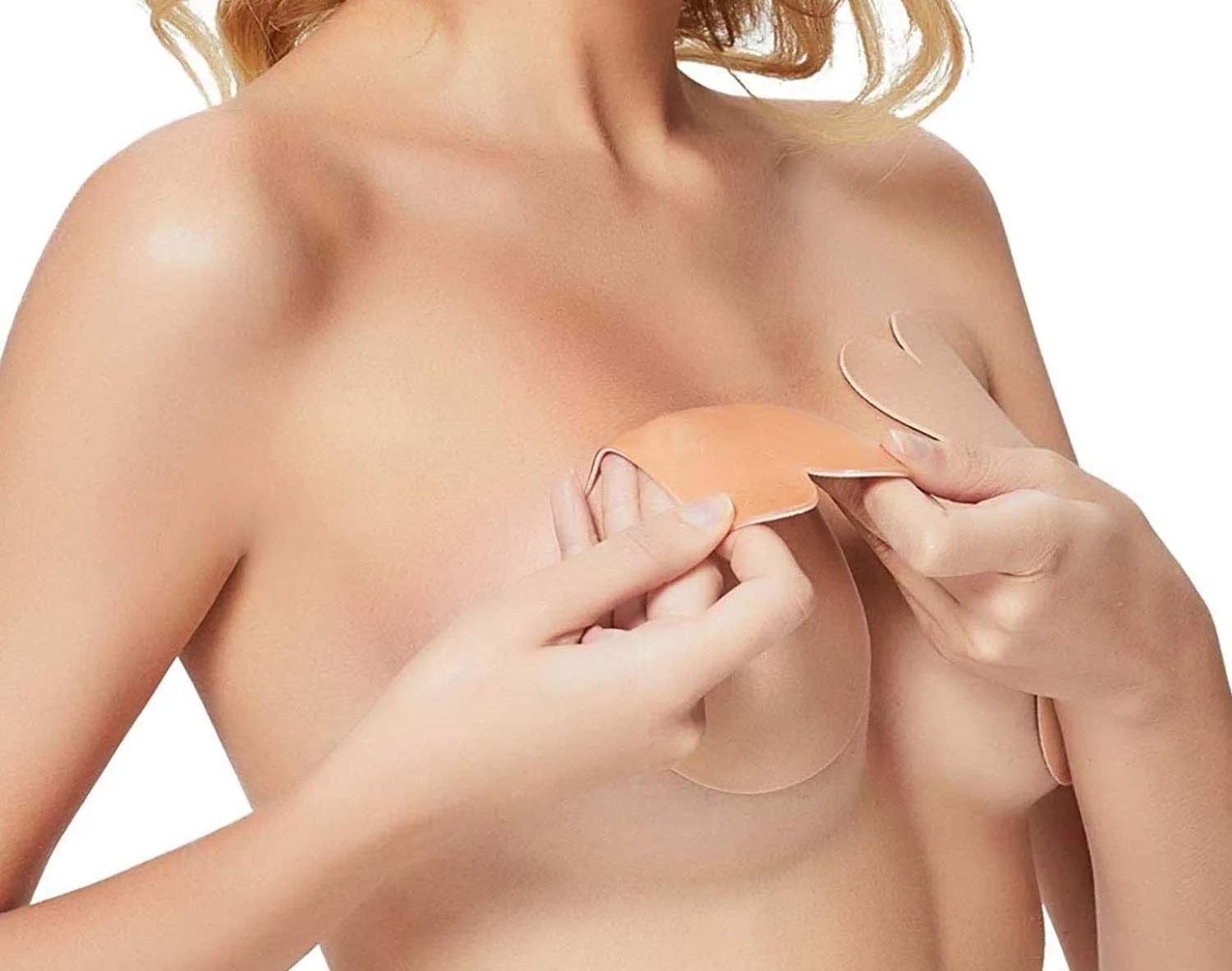Home>Women's Underwear>Bras>How Should Your Bra Fit


Bras
How Should Your Bra Fit
Modified: September 23, 2023
Discover how your bras should fit for ultimate comfort and support. Get expert tips on finding the perfect bra size and fit for your body.
(Many of the links in this article redirect to a specific reviewed product. Your purchase of these products through affiliate links helps to generate commission for Under-tec.com, at no extra cost. Learn more)
Table of Contents
Introduction
Choosing the right bra size and fit is essential for both comfort and support. Wearing an ill-fitting bra can lead to a number of issues, including discomfort, shoulder and back pain, and even breast tissue damage. Unfortunately, many women are wearing bras that don’t fit correctly, unaware of the negative impact it can have on their overall well-being.
Proper bra fit involves more than just knowing your band and cup size. Factors such as band fit, cup fit, underwire placement, strap fit, and the hook and eye closure all come into play. Understanding how your bra should fit and recognizing the signs of an ill-fitting bra is crucial in ensuring you find the perfect bra that both looks and feels great.
In this article, we will guide you through the process of finding a bra that provides optimal comfort and support. From determining your correct band size to assessing cup fit, we will cover all the key aspects of bra fitting. Additionally, we will highlight common fitting mistakes to avoid and the telltale signs that your bra may not be the right fit for you.
By the end of this article, you will have the knowledge and tools to find a bra that not only flatters your figure but also enhances your comfort and confidence. So let’s dive in and explore the world of bra fitting!
Choosing the Right Size
When it comes to finding the perfect bra fit, determining your correct size is the first step. Many women are wearing bras that are either too big or too small, resulting in discomfort and inadequate support. Follow these steps to ensure you are selecting the right size:
- Measure Your Band Size: Start by measuring around your rib cage, just below your breasts. Make sure the measuring tape is snug but not too tight. If the measurement is an odd number, round up to the nearest even number to determine your band size.
- Determine Your Cup Size: Measure around the fullest part of your bust. Subtract your band measurement from this measurement to calculate your cup size. Each inch difference corresponds to a different cup size. For example, if the difference is 1 inch, your cup size is A; if it’s 2 inches, your cup size is B, and so on.
- Try on Different Sizes: Once you have determined your band and cup sizes, try on bras in different sizes to find the best fit for your body shape and breast type. Keep in mind that different brands may have slight variations in sizing, so it’s essential to try on a variety of styles and brands.
- Consider Professional Fitting: If you’re unsure about your size or having trouble finding the right fit, consider getting a professional bra fitting. Many lingerie stores and boutiques offer expert bra fitting services, where experienced professionals can help you find the perfect size.
Remember, bra sizes are not set in stone, and they can change over time due to factors such as weight fluctuations and pregnancy. It’s essential to re-evaluate your bra size regularly to ensure you’re always wearing the correct size and experiencing maximum comfort and support.
Now that you have a better understanding of how to choose the right size, let’s move on to exploring how each element of a bra should fit for optimal comfort and support.
Band Fit
The band of a bra is responsible for providing the majority of the support. It should fit snugly around your rib cage, parallel to the ground, without digging into your skin or riding up your back. Here are some key points to consider when assessing band fit:
- Snug but Comfortable: The band should fit firmly around your rib cage, but it should still be comfortable to wear. You should be able to fit two fingers underneath the band without excessive squeezing or looseness.
- No Riding Up: The band should stay in place and not ride up your back. If the band constantly rides up, it’s a sign that it’s too loose and that you need a smaller band size.
- Parallel to the Ground: The band should sit parallel to the ground, aligning with the front of your body. If the band is riding up at the back or causing the front of the bra to tilt downward, it’s an indication that the band is too big.
- No Bulging or Digging: The band should lay flat against your skin without causing any bulging or digging into your flesh. If you notice any bulges or indentations, it’s a sign that the band is too tight and you need a larger band size.
- Adjustable Hooks: Most bras have multiple hooks and eye closures on the band, allowing you to adjust the fit. Start with the loosest hook and gradually move to tighter hooks as the bra stretches over time.
Remember, the band should do the majority of the work in providing support, so it’s important to find the right fit. If you’re unsure about your band size, try going down one band size while keeping the same cup size and see how it feels. Experiment with different sizes and styles to find the band fit that offers both comfort and support for your unique body shape.
Now that we have covered band fit, let’s move on to discussing cup fit and the importance of finding the right size to avoid common fit issues.
Cup Fit
The cup of a bra is responsible for shaping and supporting the breasts. It should provide a smooth and natural contour without causing any spillage or gaps. Here are some important considerations when assessing cup fit:
- No Spillage: The cup should fully contain your breast tissue without any spillage over the top, sides, or bottom. If you notice any bulging or overflow, it means the cup is too small, and you should try a larger cup size.
- No Gaps: On the other hand, if you observe any gaps or wrinkles in the cup, it indicates that the cup is too big, and you should try a smaller cup size. The cup should smoothly hug your breasts without any loose fabric.
- Centered and Aligned: The center front of the bra, where the two cups meet, should lie flat against your chest. If it’s lifting away or not sitting flush against your skin, it may suggest that the cup size is incorrect.
- Wire Encircling the Breast: The underwire, if present in your bra, should fully encircle the bottom curve of your breast without resting on or digging into the breast tissue. It should sit flat against your rib cage, offering support and separation.
- Comfortable Underarm Area: The sides of the cups, also known as the wings, should not dig into the breast tissue or rub against the skin uncomfortably. They should lie flat against your body and provide support without causing any irritation.
Finding the perfect cup fit requires trying on different styles and sizes to find what works best for your breasts’ shape and projection. Remember that cup sizes are relative to band sizes. For example, a D cup in a smaller band size will be smaller than a D cup in a larger band size.
It’s also important to consider the design of the bra. Some styles, such as balconette or plunge bras, may have different cup shapes and coverage levels, which could impact the fit. Experiment with various styles to find what makes you feel comfortable and confident.
Now that we have covered band fit and cup fit, let’s focus on the placement of underwire and its role in providing support and shape to the bust.
Underwire Placement
The underwire is a common feature in many bras, especially those designed for fuller busts. It serves to provide extra support, lift, and shape to the breasts. Proper underwire placement is crucial for comfort and optimal fit. Here’s what you need to know about underwire placement:
- Encircles the Breast Tissue: The underwire should fully encircle the bottom curve of your breast, sitting on the ribcage, and following the natural line of your breast fold. It should not rest on or dig into the breast tissue itself.
- Sits Against the Rib Cage: The underwire should lie flat against your ribcage, parallel to the ground. It should not protrude or dig into your chest or underarm area. If you experience discomfort or pain, it may indicate that the underwire is not positioned correctly.
- Separates and Lifts: The underwire should provide proper separation and lift, ensuring your breasts are supported and positioned in a flattering manner. It should create a natural and lifted shape without compressing or flattening your breast tissue.
- No Digging or Pinching: The underwire should not dig into your skin, cause pain, or pinch you. If you feel any discomfort or pressure, it could mean that the underwire is too narrow or not aligned with the natural contours of your breasts.
- Adjustable Underwire: Some bras have adjustable underwire that allows you to customize the fit and position of the wire according to your unique shape. This can be particularly beneficial if you have a larger bust or asymmetrical breasts.
Finding the right underwire placement may require some trial and error, especially if you have a unique breast shape or size. It’s important to remember that not all bras have underwires, and some individuals may prefer wire-free styles for comfort or personal preference.
Now that we have explored underwire placement, let’s move on to discussing the fit of bra straps and their role in proper bra support.
Strap Fit
The straps of a bra play an important role in providing additional support and maintaining the position of the cups. It’s essential to ensure that the bra straps are adjusted correctly and fit comfortably. Here are some key considerations when assessing strap fit:
- Shoulder Comfort: The bra straps should sit comfortably on your shoulders without digging in or causing pain. If the straps are digging into your shoulders, it may be an indication that they are too tight or carrying too much of the breast weight. Conversely, if the straps are constantly slipping off, they may be too loose and require tightening.
- Evenly Adjusted: The two bra straps should be adjusted to the same length so that the cups are positioned evenly on your chest. Uneven strap length can lead to asymmetry and discomfort.
- No Red Marks: When you remove your bra, there should be no lasting red marks or indentations on your shoulders. If you notice marks, it could be a sign that the straps are too tight and need to be adjusted or that the bra is not the right fit for you.
- Supportive Role: While the straps provide additional support, they should not be solely responsible for supporting your breasts. The majority of the support should come from the band and cups. If the straps feel too tight or are carrying too much weight, it may mean that the band is too loose or the cups are too small.
- Adjustability: Many bras have adjustable straps that allow you to find the perfect fit for your body. Make sure to adjust the straps according to your comfort and support needs, ensuring they provide a snug fit without causing discomfort.
Finding the right strap fit is a crucial aspect of bra fitting. It’s important to regularly check and readjust the straps to maintain an optimal fit. If you have a larger bust, consider looking for bras with wider and cushioned straps to distribute the weight more evenly and enhance comfort.
Now that we have covered strap fit, let’s discuss the importance of the hook and eye closure on the band and its role in adjusting the fit of your bra.
Hook and Eye Closure
The hook and eye closure is a vital component of a bra’s band, allowing for adjustability and ensuring a secure and comfortable fit. Here are some key points to consider regarding the hook and eye closure:
- Multiple Hooks and Eyes: Most bras have multiple sets of hooks and eyes on the band, typically ranging from two to four. Start with the loosest set of hooks and use the tightest set as the bra stretches over time. This allows you to customize the band fit and accommodate any changes in your body size or shape.
- Secure and Snug: The hook and eye closure should provide a secure and snug fit without digging into your skin. It should fasten comfortably and lay flat against your back, ensuring the band stays in place throughout the day.
- No Pinching or Riding Up: If the hook and eye closure pinches your skin or causes discomfort, it’s likely that the band is too tight. Conversely, if the closure constantly rides up your back, it’s an indication that the band is too loose, and you need a smaller band size.
- Growth and Shrinkage: Keep in mind that the hook and eye closure allows for adjustment as your body changes. If you experience weight fluctuations or changes due to pregnancy, you may need to switch to a different set of hooks to maintain a proper fit.
- Replacement and Wear: Over time, the hooks and eyes may wear out, become loose, or lose their grip. If you notice that the closure is no longer securely fastening or the hooks are bending easily, it’s time to replace the bra.
By understanding how the hook and eye closure works and utilizing its adjustability, you can ensure your bra fits properly and provides the necessary support. Regularly inspect the closure and make adjustments as needed to maintain a comfortable and secure fit.
Now that we have covered the hook and eye closure, let’s explore some common bra fitting mistakes to avoid in order to achieve the best possible fit.
Common Bra Fitting Mistakes
When it comes to finding the perfect bra fit, there are several common mistakes that women often make. Recognizing and avoiding these mistakes can greatly improve your bra-wearing experience. Here are some of the most common bra fitting mistakes to be aware of:
- Wearing the Wrong Size: One of the most prevalent mistakes is wearing a bra that is the wrong size. This can result in discomfort, inadequate support, and an unflattering fit. It’s crucial to measure yourself regularly and update your size as needed.
- Ignoring Band Fit: Many women underestimate the importance of a well-fitting band. A band that is too loose will fail to provide proper support, while a band that is too tight can cause discomfort and digging. Pay attention to the snugness and parallel alignment of the band.
- Overlooking Cup Fit: Another mistake is ignoring cup fit. Cups that are too small can result in spillage and discomfort, while cups that are too big can lead to gaps and lack of support. Ensure your breasts are fully contained within the cups without any spillage or excess fabric.
- Disregarding Underwire Placement: Improper underwire placement can be a common oversight. The underwire should encircle the breasts and sit flat against the ribcage, providing support and shaping without digging into the breast tissue.
- Incorrect Strap Adjustment: Many women fail to properly adjust their bra straps. Straps that are too tight can cause discomfort and leave marks on the shoulders, while straps that are too loose can lead to inadequate support and slipping. Take the time to adjust the straps to the right length for your body.
- Not Trying Different Styles and Brands: It’s essential to experiment with different bra styles and brands to find what works best for you. Every bra is designed differently, and what may work for one person may not work for another. Don’t hesitate to explore different options to find your perfect fit.
Avoiding these common bra fitting mistakes can lead to a more comfortable and flattering fit. Take the time to properly measure yourself, pay attention to the fit of the band, cup, underwire, and straps, and explore different styles to discover what works best for your body.
Now that we have discussed common bra fitting mistakes, let’s move on to understanding the signs of an ill-fitting bra and how to recognize them.
Signs of an Ill-Fitting Bra
An ill-fitting bra can cause various discomforts and issues that affect both your physical well-being and the overall appearance of your attire. Knowing the signs of an ill-fitting bra is crucial in order to address any fit problems promptly. Here are some common signs to look out for:
- Visible Spillage: If your breasts are overflowing from the cups, resulting in visible bulges or spillage, it’s a clear indication that the cups are too small. This can be unflattering and uncomfortable.
- Gaps or Wrinkles: On the other hand, if you notice empty spaces or wrinkles in the cups, it suggests that the cups are too big for your breasts. This lack of proper fill can result in a less supportive and less aesthetically pleasing fit.
- Strap Indentations: Deep marks or indentations left by the bra straps on your shoulders are signs that the straps may be too tight. This can cause discomfort and limit your range of motion.
- Riding Up at the Back: If the band of your bra constantly rides up your back, it’s an indication that the band is too loose. This not only compromises the fit but can also lead to a lack of support and stability.
- Underwire Digging: If the underwire of your bra is digging into your breast tissue or causing discomfort or pain, it suggests that the underwire size or placement is incorrect. This can lead to discomfort and even tissue damage.
- Breasts Spacing Apart: If your breasts are being pushed apart or spaced too far apart by the cups, it means that the bra is not providing adequate support or centering the breasts properly.
- Lack of Comfort: Above all, if you feel constant discomfort, irritation, or pain while wearing your bra, it’s a clear sign that there is a fit problem. Your bra should feel comfortable and supportive throughout the day.
Recognizing these signs will help you identify whether your current bra is ill-fitting and in need of replacement or adjustment. Remember, a properly fitting bra should feel comfortable, provide ample support, and enhance your natural shape.
Now that we have explored the signs of an ill-fitting bra, let’s summarize the key points and emphasize the importance of finding the right fit for your bra.
Conclusion
Finding a bra that fits perfectly is about more than just the numbers and measurements. It’s about understanding the key elements of fit, including the band, cups, underwire, straps, and hook and eye closure. By paying attention to these factors, you can ensure optimal comfort, support, and confidence.
Choosing the right size is the foundation of a well-fitting bra. Measure yourself regularly and try on bras in different sizes to find the best fit for your body shape and breast type. Don’t hesitate to seek professional bra fitting services for expert advice and guidance.
Remember that the band should provide the majority of the support, so it should fit snugly without riding up or digging into your skin. The cups should fully encapsulate your breasts, without any spillage or gaps. The underwire, if present, should encircle the breasts and sit against the ribcage comfortably. The straps should be adjusted correctly and provide support without digging into your shoulders.
Avoid common bra fitting mistakes, such as wearing the wrong size or overlooking the importance of band and cup fit. Pay attention to the signs of an ill-fitting bra, such as visible spillage, discomfort, or lack of support. These signs indicate the need for a different size or style of bra.
Ultimately, finding the perfect bra fit enhances your comfort, confidence, and well-being. Don’t hesitate to try different styles, brands, and sizes until you discover what works best for your unique body. Regularly assess your bra’s fit and make adjustments as needed to ensure an optimal fit throughout the day.
With the knowledge gained from this article, you now have the tools to find a bra that not only fits well but also supports and flatters your figure. Embrace the importance of a well-fitting bra, and enjoy the comfort and confidence that it brings.
